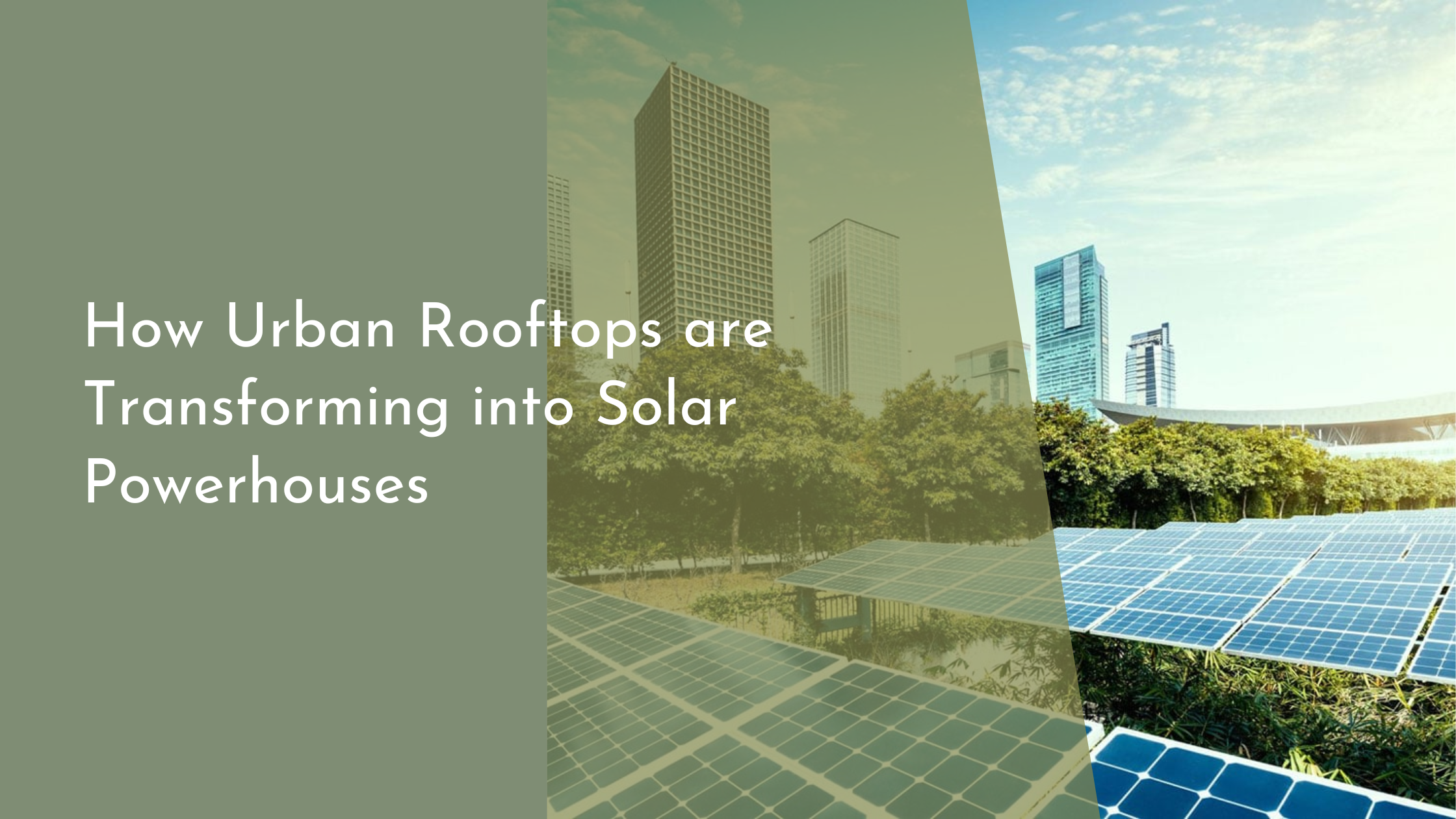How Urban Rooftops are Transforming into Solar Powerhouses
As cities continue to grow and space remains a premium commodity, urban planners and residents alike are looking skyward for innovative solutions. One promising trend is the transformation of urban rooftops into solar powerhouses. This shift not only maximizes the potential of otherwise underutilized spaces but also moves us closer to a sustainable urban future. This article delves into the rapid adoption of rooftop solar technology, the innovations driving this trend, the myriad benefits for city dwellers, and the bright prospects of solar-powered cities.
Urban Rooftops: The New Solar Energy Frontier
Urban rooftops, once neglected in the landscape of city planning, are now being recognized as prime real estate for solar energy generation. With the increasing density of urban centers, rooftops present a unique opportunity to harness the power of the sun. By utilizing these expansive surfaces for solar panels, cities can tap into a vast and largely untapped energy resource. Projects across cities like New York, Tokyo, and Berlin are leading the charge, demonstrating how solar installations can seamlessly integrate with urban architecture.
The push to transform rooftops into solar panels is also driven by the need to reduce carbon footprints and improve energy efficiency. As governments and municipalities implement stricter regulations on emissions, businesses and homeowners are incentivized to adopt greener practices. Rooftop solar installations not only contribute to these sustainability goals but also offer a pragmatic solution to energy supply issues in congested urban areas. This growing trend is a testament to the creative solutions being employed to address our modern energy challenges.
Innovations Driving Rooftop Solar Adoption
Technological advancements have played a crucial role in making rooftop solar installations more accessible and efficient. Innovations such as lightweight, flexible solar panels have made it feasible for a wider range of buildings to support solar energy systems. Moreover, breakthroughs in energy storage solutions, like lithium-ion batteries, allow for the effective storage of solar power, making it a reliable energy source even when the sun isn’t shining.
Another driving force is the evolution of smart grid technology, which has enhanced the integration of solar power into urban energy systems. Smart grids enable more efficient distribution and management of electricity, allowing cities to better leverage the power generated from rooftop solar installations. Additionally, the rise of solar leasing options has made it easier for property owners to install solar panels without the substantial upfront costs, further accelerating the adoption of solar technology in urban areas.
Benefits of Solar Rooftops for City Dwellers
One of the most significant benefits of solar rooftops is the potential for substantial energy cost savings for city dwellers. By generating their own electricity, homeowners and businesses can significantly reduce their reliance on traditional power sources, which often come with fluctuating prices. Over time, these savings can offset the initial investment in solar technology, making it a financially attractive option.
In addition to cost savings, solar rooftops contribute to improved air quality and a healthier urban environment. By reducing the dependence on fossil fuels, solar energy systems help decrease greenhouse gas emissions and reduce the urban heat island effect. This shift not only benefits individual households but also contributes to the overall well-being of the community, fostering a more sustainable and livable urban environment.
The Bright Future of Solar-Powered Cities
Looking ahead, the proliferation of solar-powered rooftops signals a transformative shift in how cities manage and distribute energy. As more urban areas embrace renewable energy, we can expect a ripple effect that will drive innovation in other sectors such as transportation, waste management, and building materials. The integration of solar energy into urban planning is set to redefine cityscapes, making them more resilient to climate change and energy demands.
Furthermore, the increasing adoption of solar rooftops is likely to spur job creation and economic growth within the renewable energy sector. As the demand for skilled workers in solar installation and maintenance rises, cities can benefit from new employment opportunities and a strengthened local economy. The future of solar-powered cities is not just about cleaner energy; it’s about building communities that are sustainable, innovative, and economically vibrant.
The transformation of urban rooftops into solar powerhouses is a promising development in the quest for sustainable urban living. As technology continues to advance and more cities embrace this clean energy solution, the potential for positive change is enormous. From reducing energy costs to improving air quality and fostering economic growth, the benefits of solar rooftops are manifold. With each new installation, we move closer to a future where urban environments are not only places of living but also thriving ecosystems powered by the sun.


